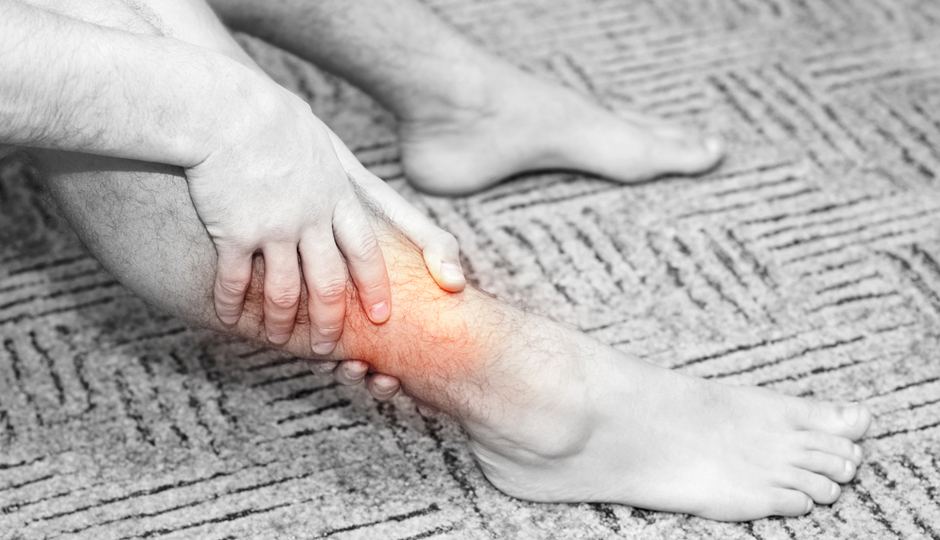Broad Street Runners: What to Do Before Sunday If You Have Shin Splints

Shutterstock
I heard from few readers earlier this week who are worried about running Sunday’s Blue Cross Broad Street Run because of some lingering shin split pain from their months of hard training. So I wondered: Is there anything they can do at this point, just four days (!!) out from the race, to help them get to the finish line in one happy, strong, pain-free piece?
Good news: Yes, there is.
I talked with Rothman Institute sports medicine surgeon Donald Mazur about the ins-and-outs of shin splints (what the heck are they, anyway?) and how to deal with them with a race just a few days away. His sage advice is below.
What are shin splints, exactly? Are they dangerous?
They’re a common problem in athletes, especially runners. Medically speaking, shin splints are officially called medial tibial stress syndrome. In the old days, doctors thought they were just caused by irritation of the covering of the shin bone. Now most people are thinking the pain comes from multiple problems: irritation of the membrane that covers the shin bone, muscle imbalances from the foot to the core, foot strike, the biomechanics of your feet, ankles and legs. The surface you train on also plays a role. So there’s a lot involved.
Running is nothing more than a series of jumps. When you run, the impact of the force coming up your ankles and foot is many times your body weight. A lot of that shock gets absorbed by muscle, so if it’s not absorbed properly you will have shin splits. This is why shin splints is called the Too Much Too Soon Syndrome: People ramp up their training too fast and their bodies aren’t adapting quickly enough.
Is it safe to run if you’re experiencing shin splints?
While it is generally safe to run on shin splints, the pain won’t go away until you stop doing whatever activity is causing them. My biggest concern is to always make sure the pain is actually from shin splints and not a stress fracture. Bone is constantly building itself up and breaking itself down. If you stress it too much, the build up can’t keep up with the breakdown so on the microscopic level your bone starts to pull apart. Doctors will look for the swelling of the bone. The problem is that it can become a bigger fracture if you don’t deal with it properly.
How can a person differentiate between shin splints and a stress fracture?
If you tap or press on the front of the shin and the pain is in a specific spot, or if you experience discomfort around knee, you should see a doctor—you could have a stress fracture. Another way to tell: Pain from stress fractures won’t subside when you stop running, but pain from shin splints goes away once you stop. You won’t feel shin-splint pain when you do other activities, like walking or climbing stairs.
If I determine that I have shin splints, is there anything to be done about them between now and Sunday, for Broad Street?
Rest is obviously the best solution, but here are some other strategies:
1. Ice massage. Fill Dixie cup halfway with water, freeze it, then use it as a piece of ice to run up and down your tibia.
2. Take anti inflammatories. This will help any inflamed areas to subside. Ibuprofen or aspirin are good options. Tylenol is not an anti-inflammatory medication.
3. Stretching. Target the Achilles and the tibialis muscles.
4. Compression socks. While there isn’t great science on the effectiveness of compression socks, I have patients that swear by them. The thinking is that if you support the muscle around the bone, it’ll be less inflamed and will be able to work more efficiently. (Editor’s note: I would caution you against wearing compressions socks for the very first time at a big race. If you want to try this for Broad Street, consider doing a light run today or tomorrow while wearing compression socks to see how you feel. Most runners don’t advocate wearing something brand new on race day.)
What should you do after Broad Street to help your shin splints heal?
If you’ve had them for awhile, they won’t go away until you take some time off. I would recommend a period of rest and a gradual return to running, along with stretching, strengthening, and range of motion exercises. If your shins are tender, rest until the tenderness goes away. For most people that’s really a week or two. If the pain doesn’t got away, you should see a doctor.
Like what you’re reading? Stay in touch with Be Well Philly—here’s how:
- Like Be Well Philly on Facebook
- Follow Be Well Philly on Twitter
- Follow Be Well Philly on Pinterest
- Get the Be Well Philly Newsletter


